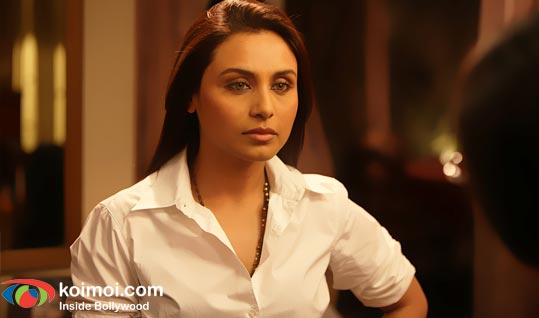It may be added here that the points raised in the last three paragraphs above may be of concern for the masses among the audience but these very points may actually prove to be plus points for the classes which may appreciate the absence of cliched scenes and melodrama in the film.
Another notable point: both the heroines of the film make lofty promises but fail to keep them. Sabrina announces that she had made herself and her late sister, Jessica, a promise that she wouldn’t shed a tear till she had got justice for her (Jessica). But yet, she starts to cry at the candle march. Surely, Sabrina couldn’t have known at the candle march that the case would soon be reopened. In any case, she was hardly responsible for the candle march in the first place, so it wasn’t even as if she had gotten justice (if the march can at all be called ‘getting justice’) for her sister. Mira tells her assistant, Aditi (), that she would make her famous for her farsightedness in the Jessica Lall murder case. But once the case is ‘reopened’ by Mira’s TV channel, she never lets the world know about Aditi’s farsightedness. In fact, it is always Mira who comes across as the hero. So, the discerning audience feels let down by the unkept promises of the two heroines who are the virtual heroes of the drama.
Both, the first and second halves of the film have scenes that seem stretched. Dialogues (by Raj Kumar Gupta) go with the mood of the film and are appealing.



 Follow Us
Follow Us








